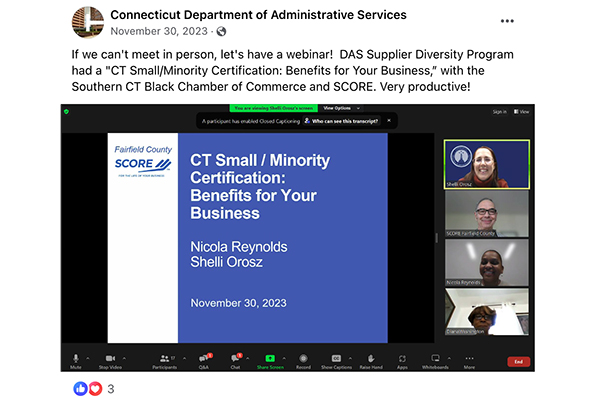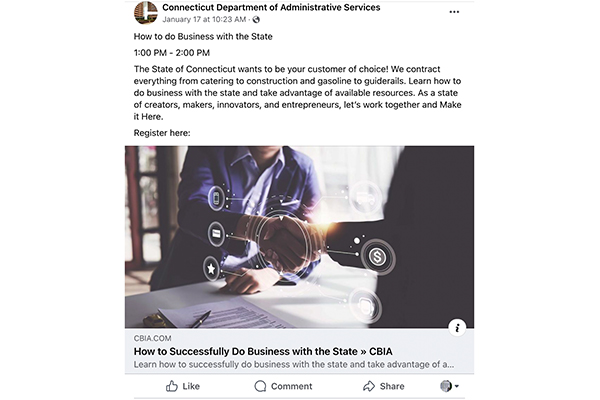You might have guessed this, but the “New Users” metric refers to the number of users who visited or interacted with your site for the first time. Since you want the information on your site to reach as many customers as possible, you generally want this number to be high.
The question is: how high? It can vary from website to website. What can be helpful, though, is to find your New User Rate by dividing the number of new users by the total number of users on your site. This result will tell you the percentage of those on your site who are first-time visitors. Knowing that percentage, you can determine whether you need to increase your reach or you can focus on returning users.
Note: If your site is brand new, has a new URL, or has been newly updated in the website modernization efforts, it’s normal for the new user count to remain low for several months. This number is lower because it takes time for Google to index the site and send organic traffic based on search terms that match what Google’s bots have found on your pages.
Q: How can I increase the number of new users on my agency’s site?
A: You can employ many strategies to increase the reach of your agency’s site to new users. These include on-site changes and strategies to market your content more favorably to prospective users using ads and search engine optimization (SEO).
Learn more about how to have better SEO on your agency site >
- Craft engaging, high-quality content: The best way to drive traffic or visitors to your website is to craft engaging content that answers a question or solves a specific problem. It’s as simple as can be: a great site that’s useful to users will get more traffic than one that’s confusing or does not help users accomplish their goals. Here are just a few of the things you should pay attention to while drafting your content to ensure it’s engaging to new users:
• An intuitive user journey
• Concise, scannable information
• Easy-to-read, jargon-free text
• Visually appealing formatting
• Clear, actionable calls to action
Learn more about on-page content strategy and page structure >
- Create new content regularly: Every new piece of content is why a potential user may want to visit your website. Whether you’re updating a blog, uploading new press releases, or posting information on an upcoming event, these are all new opportunities for users to engage with your agency, increasing the number of new visitors to your site. And while there, they may discover something they didn’t know they were missing.
- Improve your content with keywords: Finding relevant keywords for your agency using your dashboard will help users find your content through search engines like Google. You can also use Google Search Console results or online SEO tools like Ahrefs or Semrush to identify which search terms drive the most visitors to your webpage. Use these keywords throughout your site’s content to help your site rank for these terms on search engines so that users can find you.
Example of a good use of keywords to promote the “Mental Health” page on Health: Notice the frequent use of keywords related to mental health so that the page’s content is abundantly clear to search engines.

- Optimize your content for search engines: Aside from keywords, several factors affect how high your website ranks on search engines. These elements include:
1. Titles that match what people are searching for
2. Compelling, high-quality meta descriptions
3. Internal links to and from essential pages
Learn more about search engine optimization that can help improve your site’s new user count >
- Create targeted landing pages: Directing visitors to a dedicated page featuring what interests them helps them engage with your website (and find it when they’re using search engines). A large part of this process is determining what pages your users are interested in—you can use GA4 analytics to find the most viewed content and go from there. Once you have that information, making what content users are interested in readily accessible on a targeted landing page will bring more traffic to your site.
Example: Using analytics, you notice that 95% of users are clicking a few related links on a page with 50+ forms and documents. Creating a dedicated page for those links, with optimized SEO to drive users to that page, will help increase reach and improve the user experience. - Use emails or social media to drive new user traffic: A tried-and-true way to generate traffic is via email. Email can be a powerful outreach tool to target and inform your audience and drive people to specific pages on your website. Of course, this strategy requires returning users to sign up to receive emails from your agency and share those emails with others—you’ll need the high-quality, engaging content we discussed earlier to ensure that happens.
- Make an impact on social media: Social media can help you reach new audiences and drive them to your website. This strategy can be especially true when you want to get the word out about new content, events, or initiatives that people may want to share with their friends on channels like Facebook, LinkedIn, Instagram, and more.
Here’s an example of a less effective social media post: Notice a missed opportunity to link back to the Supplier Diversity Program site, a video clip, or a link to the next webinar.

Here is an example of an effective social media post: Notice how there is an event time, date, clear CTA, and a registration link below.

Learn more about how to write for social media effectively >

